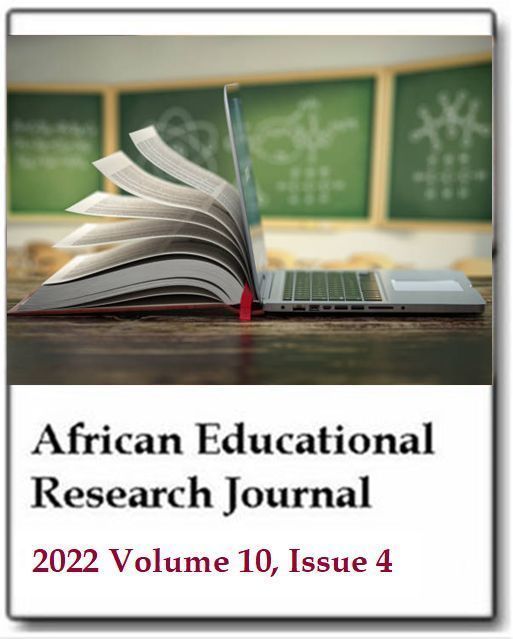Social and psychiatric effects of Covid-19 pandemic and distance learning on high school students: A cross-sectional web-based survey
Seyahi LS, Ozcan SG, Sut N, Mayer A and Poyraz BCAfrican Educational Research Journal
Published: October 5 2022
Volume 10, Issue 4
Pages 369-381
DOI: https://doi.org/10.30918/AERJ.104.21.123
Abstract
We investigated the socio-psychological effects of both the pandemic and distance learning on high school students in Turkey and Denmark. We aimed to assess whether there were any differences between students attending public or private schools in Turkey, and between two countries having different approaches to the pandemic and considerable socio-cultural and economic differences. We conducted a web-based questionnaire study in a cross-sectional design using the Survey Monkey Platform and sent it out via social media to high school students in Turkey and Denmark. The survey collected socio-demographic data, several variables associated with pandemic and distance education and their effects on social life and psychological well-being. Additionally, emotional health was assessed using the Positive and Negative Affects Schedule. We studied 565 (mean age: 16.5 ± 1.0) Turkish and 92 (mean age: 17.7 ± 1.0) Danish students, of whom the majority were female adolescents (63% vs 76%). Students educated in public (47.6%) and private high schools (52.4%) were nearly similar in number in the Turkish group, whereas in the Danish sample almost all students were from public schools (98.9%). Turkish students were significantly more likely to be compliant with the pandemic-related restrictions. Besides that, there were significant socio-economic disparities between Turkish and Danish students and also within Turkey between public and private school students. Turkish online education system was significantly less adequate and satisfactory compared to the Danish system. These were even worse for those who were attending public schools in Turkey. Regardless of the socio-economic differences, the majority of the students in both countries have been negatively affected by the pandemic and related restrictions and had a negative opinion about distance education. This was also true for the PANAS scores. The total scores of PANAS were similar between Turkish and Danish students (PA: 27.0 ± 7.6 versus 25.8 ± 5.6; NA: 24.8 ± 7.5 versus 24.5 ± 7.3) and also within Turkey between public and private school students (PA: 26.8 ± 7.5 versus 27.1 ± 7.6; NA: 24.7 ± 7.2 versus 25.0 ± 7.8). While female students were significantly more severely affected in the Turkish group, no such gender differences were observed in the Danish group. Additionally, considerable portion of the students in Turkey and Denmark expressed loneliness (55.2% vs 59.8%, p<0.706), boredom (71.2% vs 58.7%, p=0.019) and anxiety towards the future (61.4% vs 22.8%, p<0.001). Decreased physical activity, sleep problems, eating disorders and domestic abuse were other complaints. In conclusion, adolescents from both countries have been severely affected by the pandemic and its related restrictions and expressed negative views about distance education. Turkish online education system seemed to be less satisfactory when compared to the Danish system. Within Turkey, public school students had significantly more disadvantages compared to those attending private schools. Despite the fact that there were several socio-economic inequalities among students, in general, there were no robust significant differences regarding the psychological status and opinion about distance learning, indicating a global worsening of emotional status during the pandemic.
Keywords: COVID-19, education, adolescents, distance learning, psychology, sleep problems, eating problems, domestic abuse, positive and negative affect, PANAS, web-based survey, Turkey.
Full Text PDFThis article is published under the terms of the Creative Commons Attribution License 4.0

